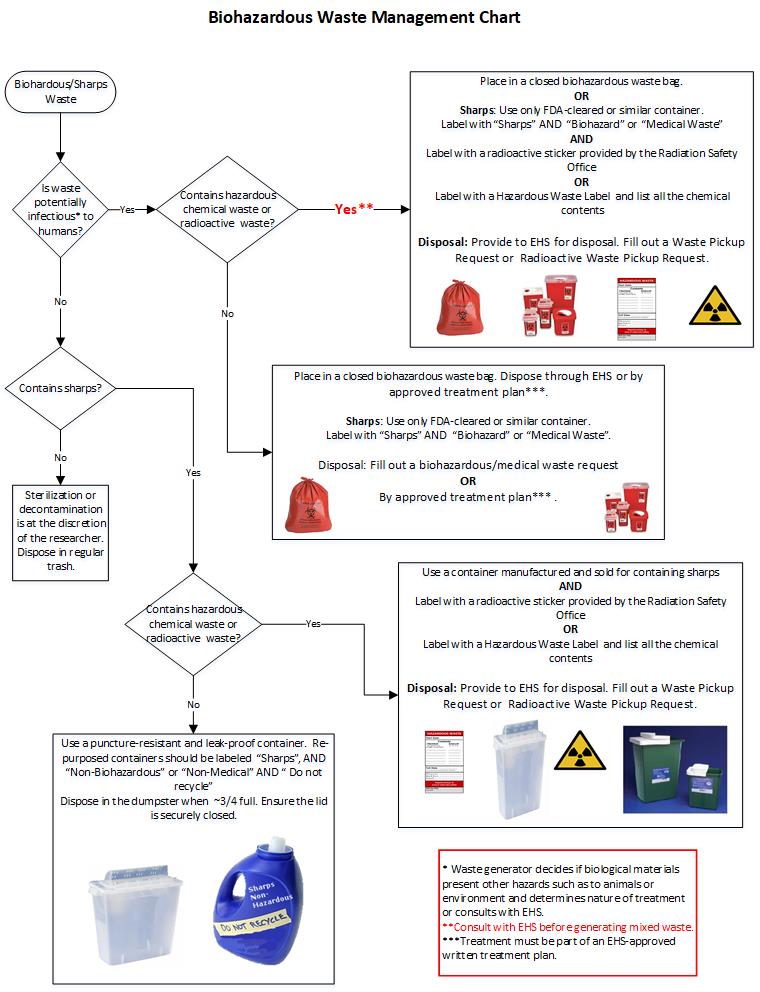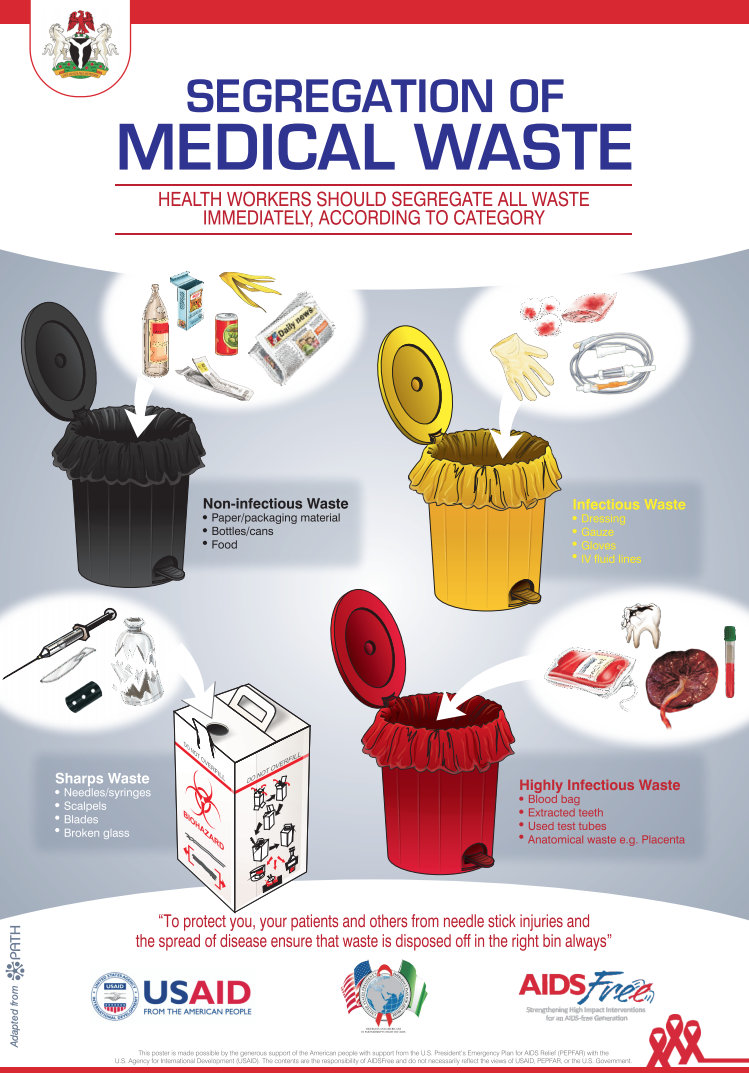Complete Medical Waste Removal Service: Smooth Disposal for Medical Care Facilities
Wiki Article
Effective Techniques of Medical Waste Disposal
Effective techniques of clinical garbage disposal are essential in maintaining public health and wellness and environmental safety. Medical waste, consisting of sharps, pathological waste, and pharmaceutical waste, need to be handled and dealt with correctly to protect against the spread of infections and safeguard the atmosphere. This needs adherence to rigorous policies and the application of specialist waste management practices.Proper segregation of medical waste, safe and safe storage space, effective therapy and disinfection approaches, and environmentally-friendly disposal choices are key components of an efficient medical waste disposal system. Specialist waste monitoring solutions play an important role in guaranteeing compliance with guidelines and minimizing the dangers associated with improper disposal. By using these methods, health care centers can contribute to a more secure and cleaner atmosphere while guarding the well-being of the area.
Proper Partition of Clinical Waste
Correct segregation of clinical waste is essential for making sure the effective and risk-free disposal of these possibly harmful products. Medical waste refers to any waste generated during medical care tasks, such as health centers, facilities, laboratories, and research centers. It includes a variety of products, such as made use of needles, syringes, infected dressings, ran out or unused medications, and organic materials.By setting apart clinical waste, healthcare centers can lessen the danger of infections, injuries, and environmental contamination. The process includes categorizing waste right into different kinds, such as sharps, transmittable waste, pharmaceutical waste, and non-hazardous waste. Each kind requires certain handling, product packaging, and disposal techniques to prevent exposure to health care workers, waste monitoring workers, and the public.
To ensure proper partition, health care centers must establish clear guidelines and offer sufficient training to team member. This consists of enlightening staff members on the various waste classifications, correct product packaging techniques, and using proper containers - WasteX Medical Waste Disposal. Furthermore, clear signs and color-coding systems can be executed to promote the identification and segregation of different waste types
Safe and Secure Storage of Medical Waste
Safe and safe and secure storage of clinical waste is critical for preserving the stability and containment of possibly harmful materials. Correct storage not just secures medical care employees and the general public from exposure to harmful materials however additionally prevents environmental contamination.To guarantee safe storage space, clinical facilities should adhere to particular standards. Waste needs to be saved in leak-proof and puncture-resistant containers that are classified suitably - medical waste disposal.
Proper segregation of medical waste is likewise crucial for secure storage. Various sorts of waste, such as sharps, contagious products, and pharmaceutical waste, need to be divided to stop cross-contamination. This partition can be attained through the use of color-coded containers or containers.
Routine monitoring and assessment of the storage area are important to determine any possible risks or breaches. This includes checking for indicators of damages or wear and tear in the containers, guaranteeing appropriate air flow, and keeping an eye on temperature level and humidity levels.
Effective Treatment and Disinfection Approaches

One typically used treatment approach is autoclaving, which includes subjecting the waste to high-pressure vapor at temperature levels over 121 degrees Celsius. This procedure effectively kills bacteria and destroys contagious agents, providing the waste secure for further disposal. One more method is incineration, which involves shedding the waste at high temperatures. Incineration not only gets rid of microorganisms but additionally minimizes the waste quantity with combustion.
Chemical sanitation is another effective method for treating clinical waste. This method involves using anti-bacterials such as chlorine substances, phenolic compounds, or hydrogen peroxide to kill or inactivate pathogens (WasteX Medical Waste Disposal). Chemical sanitation is often used for fluid waste, such as lab samples or physical fluids
In current years, alternate therapy methods such as microwave sanitation, irradiation, and organic treatment have actually likewise gotten focus. These techniques use benefits such as decreased ecological effect and power consumption compared to typical methods.
Environmentally-friendly Disposal Options
In the world of clinical garbage disposal, thinking about environmentally-friendly alternatives is critical. Medical care facilities create a substantial quantity of waste, including transmittable materials, drugs, and chemicals, which can pose serious risks to human health and the setting if not taken care of effectively. There are several environmentally-friendly disposal alternatives available that can help alleviate these threats.
Recycling clinical waste entails setting apart and refining particular materials for reuse or repurposing. In addition, some health care facilities have implemented recycling programs for specific clinical gadgets or devices, further decreasing waste generation.
This technique entails converting clinical waste into power with processes like incineration or anaerobic food digestion. Anaerobic digestion, on the various other hand, breaks down natural waste in the lack of oxygen, generating biogas that can be made use of for electrical power or warm generation.

Advantages of Specialist Waste Management Provider
One substantial benefit of expert waste administration solutions is the enhanced effectiveness in disposing and handling of medical waste. Health care centers create a substantial quantity of waste that consists of dangerous products, such as sharp things, infected items, and possibly transmittable waste. medical waste disposal service. Incorrect handling and disposal of clinical waste present major health and wellness threats to workers, people, and the public. By making use of specialist waste management solutions, health care facilities can make sure that all medical waste is managed and gotten rid of appropriately, decreasing the threat of contamination and the spread of illness.Specialist waste monitoring services utilize seasoned and trained workers who are educated concerning the laws and guidelines for medical waste disposal. They have accessibility to specialized devices and tools that browse around here allow them to manage various types of medical waste safely and efficiently. These solutions also have reputable treatments and methods in location to guarantee that waste is set apart, packaged, moved, and disposed of in conformity with local, state, and federal regulations.
In addition, expert waste monitoring solutions can offer medical care centers with extensive waste management services. They can provide services such as waste collection, transport, disposal, and therapy, tailored to the details requirements and requirements of the center. This eliminates the concern of managing waste internally, allowing healthcare team to concentrate on offering high quality patient treatment.
Conclusion
In verdict, reliable approaches of medical waste disposal involve proper partition, risk-free storage space, treatment and disinfection, and environmentally-friendly disposal options (WasteX Medical Waste Disposal). These approaches ensure the safe handling and monitoring of medical waste, avoiding the spread of infections and protecting the atmosphere. Professional waste monitoring solutions play an essential role in implementing these methods and ensuring compliance with guidelines. By adhering to these methods, healthcare centers can add to a more secure and much healthier atmosphere for both people and the area.Clinical waste, including sharps, pathological waste, and pharmaceutical waste, must be taken care of and disposed of appropriately to prevent the spread of infections and secure the atmosphere.Correct partition of clinical waste, risk-free and safe and secure storage space, reliable therapy and sanitation approaches, and environmentally-friendly disposal alternatives are vital parts of a reliable clinical waste disposal system. The process entails classifying waste right into various kinds, such as sharps, contagious waste, pharmaceutical waste, and non-hazardous waste. By using expert waste administration services, healthcare facilities can ensure that all medical waste is handled and disposed of properly, reducing the danger of contamination and the spread of illness.
Specialist waste monitoring solutions use qualified and knowledgeable workers that are knowledgeable about the policies and standards for medical waste disposal.
Report this wiki page